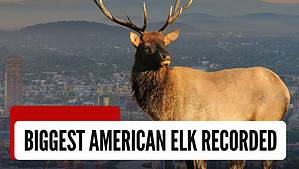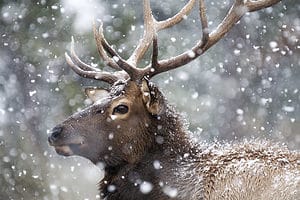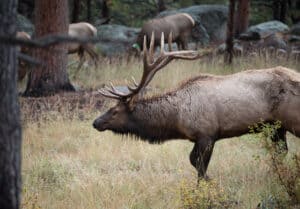The male elk is one of North America’s biggest animals and may weigh over 700 pounds. Females are often lighter, weighing in at roughly 500 pounds. However, they usually lose weight during the winter mating season. Elk are also known by their traditional name, “wapiti,” which means “white rump,” which the Shawnee people gave them because of the animal’s light patch of beige fur on its dark brown body. Check out the following ten incredible facts demonstrating elk’s uniqueness, from their bugle sound to their gigantic size.
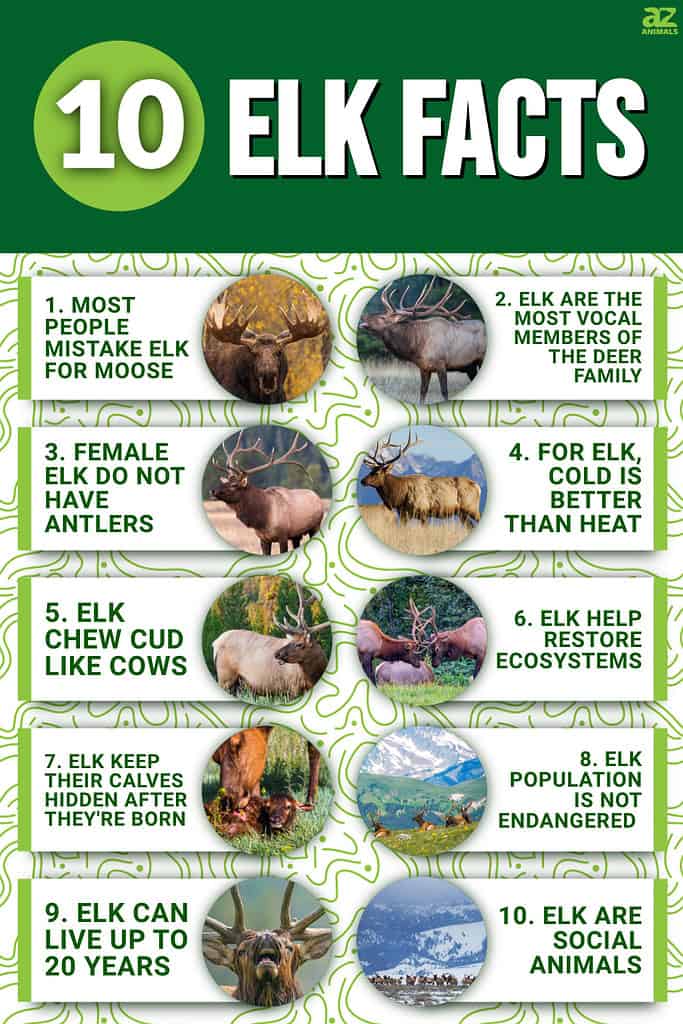
1. Most people mistake elk for moose

The moose and the elk are similar in appearance, but the most distinctive differing feature is the size and form of their antlers. Moose antlers are wider and flatter.
©Tom Tietz/Shutterstock.com
People often mistake these animals, probably because they look alike in some ways. However, spotting their differences would be much clearer if one studied or took a closer look at both mammals. There are several morphological differences between an elk and a moose, but their size and the form of their antlers are the most noticeable. Moose is the larger of the two, growing up to 6.5 feet tall from foot to shoulder, whereas elk are typically 3 to 5 feet tall. The antlers of male moose are also wider and flatter, but the antlers of male elk are longer and have tips that stick out.
Their social structure is the most visible way to identify them differently. Moose are far more lonely and prefer to spend their time alone, but elk, on the other hand, roam in vast groups, which can be referred to as “gangs.”
2. Elk are the most vocal members of the deer family

During mating season, male elk make a high-pitched bugling sound to attract females.
©Ghost Bear/Shutterstock.com
Another interesting fact about elk is their loud nature. During mating season, male elk use their high-pitched roar, called “bugling,” to attract female partners. This loud booming sound, which has a fundamental frequency of 2 kHz or more, is also employed to promote, establish, and defend territory in the winter. No deer family member has the same vocal powers as an elk.
3. Female elk do not have antlers

Only male elk possess antlers.
©Tom Tietz/Shutterstock.com
Even if you come across a thousand elk in herds, know that the females among them lack antlers. Only male elk possess antlers, unlike other deer species such as reindeer. They grow their distinctive antlers in the spring and shed them each winter. During their growth, elk antlers are coated with velvet (a delicate layer of skin) that sheds when the temperature warms up in the summer. During the mating season, male elk use their antlers to compete with one another. They lower their heads and knock them against other males to gain strength and attract females.
4. For elk, cold is better than heat
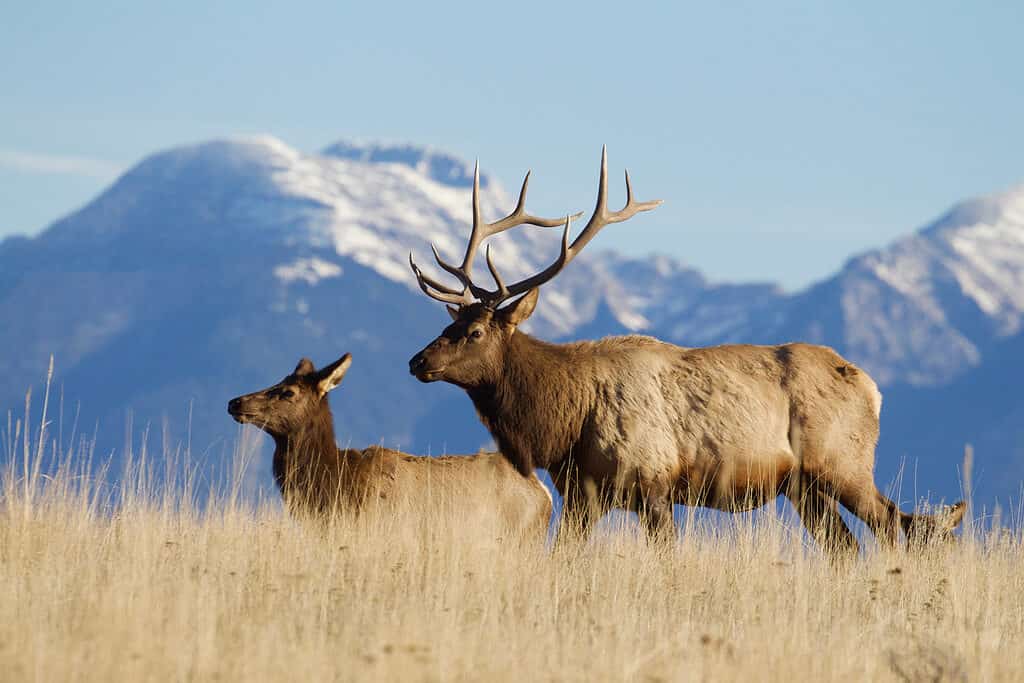
Elk prefer colder weather and are more active in winter, early spring, and fall.
©Tom Reichner/Shutterstock.com
Even as most humans prefer it, elk enjoy the cool days over the hot ones. Elk are usually more active when the day or weather becomes more relaxed, regardless of where they live. They are more likely to be seen in the winter, early spring, and fall (during the mating season). For instance, at the Neal Smith National Wildlife Refuge in Iowa, elk spend most of their summer foraging and scavenging in the early mornings and late evenings to escape the heat.
5. Elk chew cud like cows

Elk are ruminant animals that regurgitate their food intake and continue chewing it to help with digestion.
©DJ40/Shutterstock.com
Elk graze on sedges, grasses, and herbaceous blooming plants in the summer, while in the winter, they feed on woody vegetation such as jack pine, cedar, and red maple. They are ruminant animals, which means they regurgitate food intake and continue to chew it to facilitate digestion. According to research conducted in the Rocky Mountains in 2006, elk repeatedly forage in many of the same sites as cattle do in the fall and summer. For this reason, cattle and elk overlap more than 60% of each other’s territory.
6. Elk help restore ecosystems
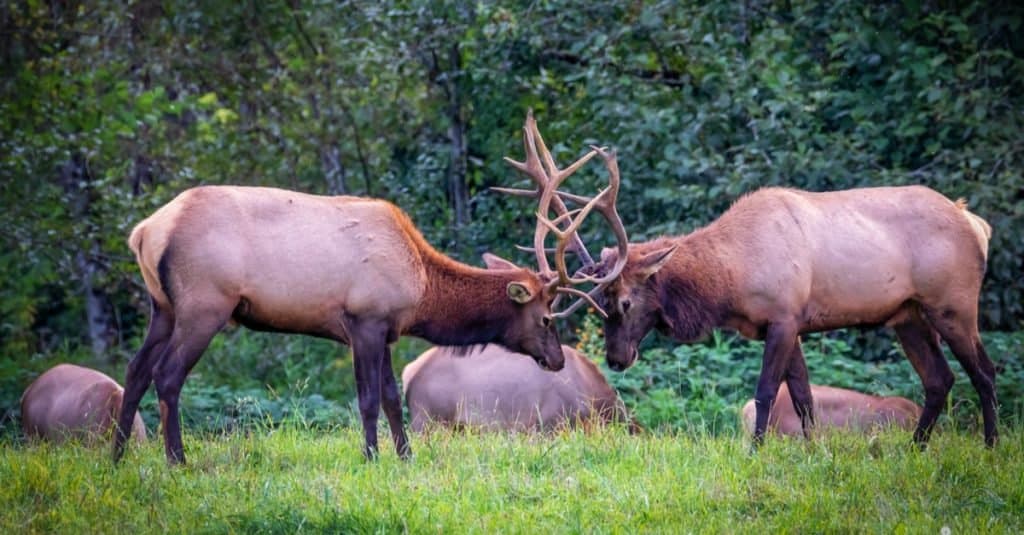
Elk play a vital role in changing the communities of plants within their habitats.
©Mark A Lee/Shutterstock.com
Through their feeding, grazing, and foraging, elk play a vital role in changing the communities of plants within their habitats. Elk, like bison, have been brought to various national wildlife refuges to aid in the restoration of grass prairie ecosystems. They essentially consume wildflowers and grass. But like deer, they also graze on trees and shrubs, which promotes and stimulates the growth of prairie plants while regulating shrub and tree overgrowth. Elk are also vital food sources for massive predators such as brown bears.
7. Elk keep their calves hidden after they’re born

After elk calves are born, their mothers seek a hidden spot in thick brush or long grass, where they lay immobile for approximately 16 days.
©Karlie Butler/Shutterstock.com
Elk babies are concealed during the first couple of days of their existence. Female elk seek out a hidden spot in thick bush or long grass to hide their offspring, who remain immobile until they are around 16 days old. To avoid attracting predators, calves are born with very little or no scent, and they also have white dots that effectively hide them by breaking up their appearance and resembling bright spots.
Females carrying newborn calves in Yellowstone National Park spend more than 25% of their time watching for predators, while males spend less than 10% of their time watching for predators.
8. Elk population is not endangered

Elk are classified as “Least Concern” by the IUCN because of their huge population.
©Virrage Images/Shutterstock.com
The IUCN Red List of Threatened Species classifies elk as a “Least Concern” because of their massive population count. And their populations have continued to increase significantly due to conservation efforts by the Department of Natural Resources and some private individuals. For instance, in 1875, the Californian subspecies, tule elk, had declined to less than five individuals. But the numbers had increased to over 3,900 by 2010 due to strong protection measures.
9. Elk can live up to 20 years
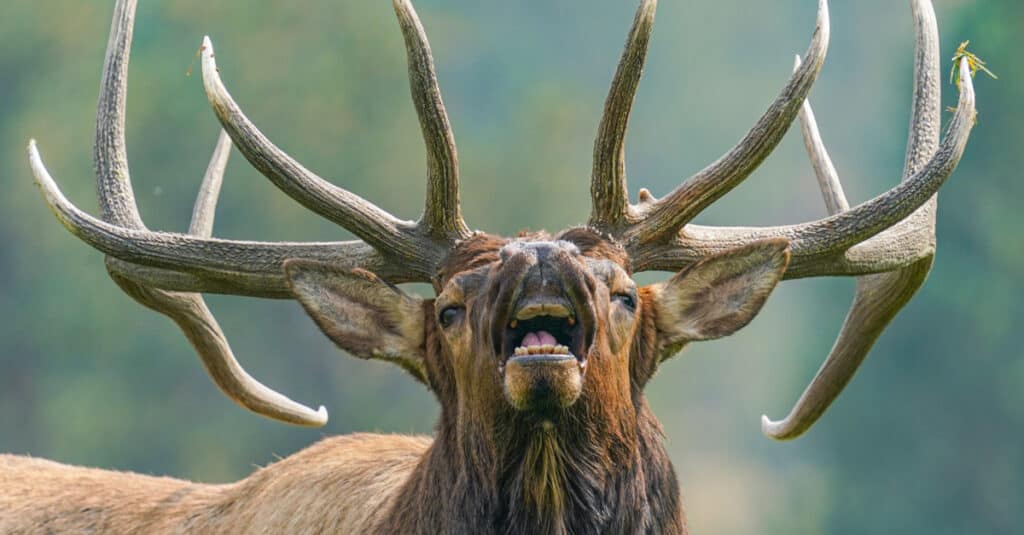
Elk have an average lifespan of 10-15 years in the wild.
©Cornelius Doppes/Shutterstock.com
Elk, unlike several deer species, naturally live longer in captivity than in the wild. They have an average lifespan of 10-15 years in the wild, while they may live up to 20 years in captivity.
10. Elk are social animals

Elk are social animals that live in large herds numbering in the hundreds and even thousands.
©Chase Dekker/Shutterstock.com
Elk live and move about in large groups (herds) that might number hundreds or even thousands. While herds are divided by gender, elk are highly matriarchal, meaning the show is directed by one female who leads them all. The “Jackson Elk Herd,” having a large number of members (precisely 11,000) that migrate from the Wyoming National Elk Refuge to southern Yellowstone, is indeed one of the biggest on record.
The photo featured at the top of this post is © Tom Tietz/Shutterstock.com
Thank you for reading! Have some feedback for us? Contact the AZ Animals editorial team.



